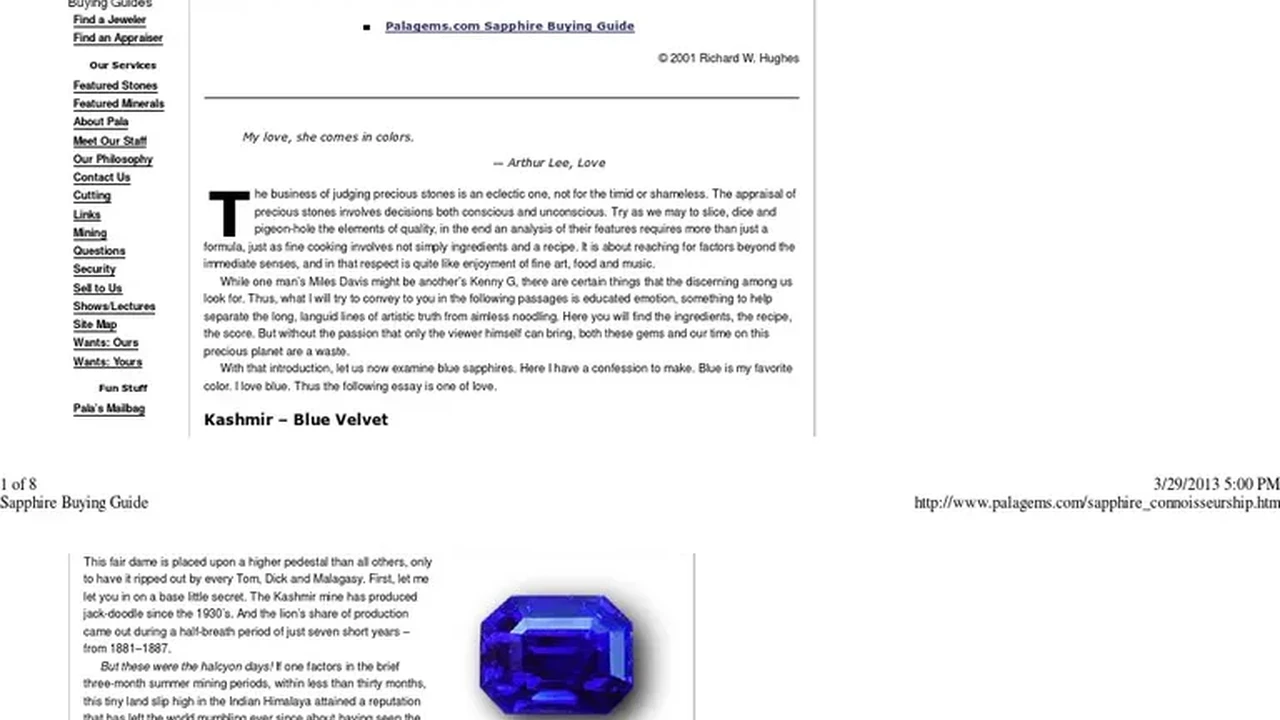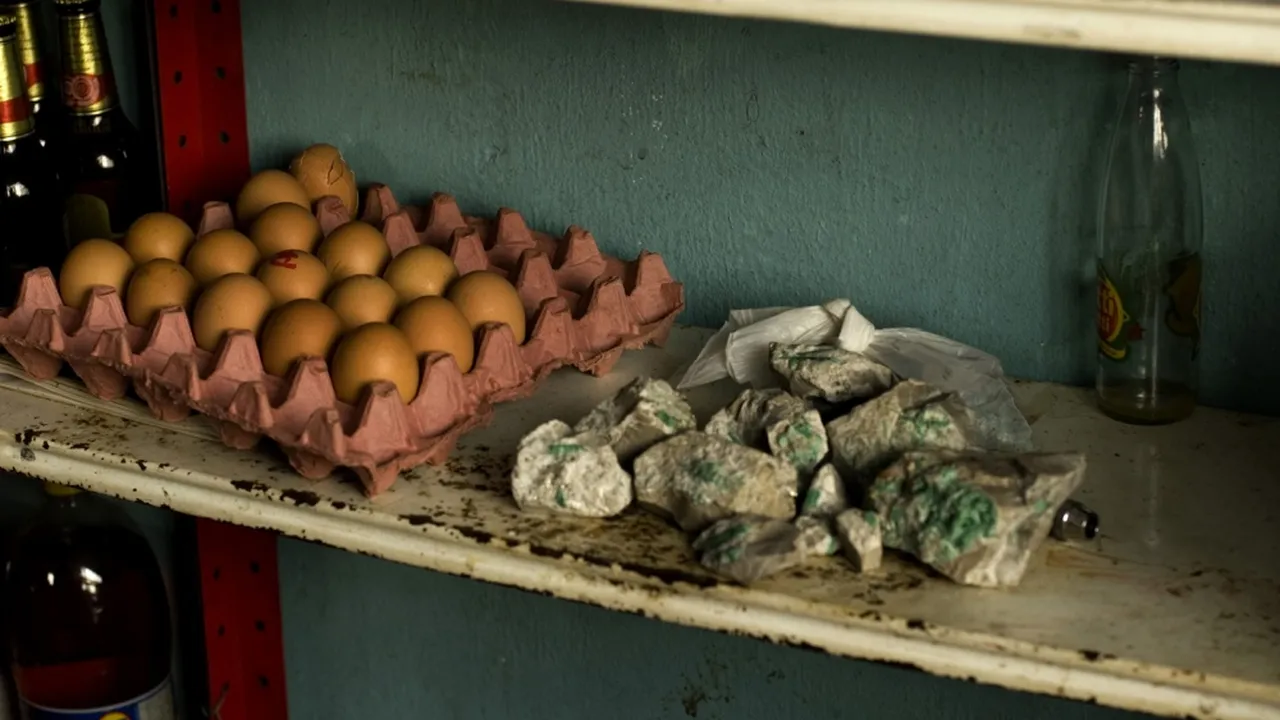The Ultimate Guide to Buying Sapphires A Smart Investor's Handbook
A smart investor's handbook on buying sapphires. Learn everything you need to know about sapphire grading, pricing, and market trends in the US and Southeast Asia.

Understanding Sapphire Grading for Investment Purposes
So, you're thinking about investing in sapphires? Awesome! First things first, let's talk grading. It's not as simple as just saying 'that's a pretty blue stone.' Several factors determine a sapphire's value, and understanding them is crucial for making smart investment decisions. We're talking about the 4 Cs: Color, Clarity, Cut, and Carat weight. But with sapphires, color is king, especially in the US and Southeast Asian markets.
Color: The most desirable sapphires boast intense, vivid hues. For blue sapphires, a strong, saturated blue is key. Think 'cornflower blue' or 'royal blue.' In Southeast Asia, particularly in places like Thailand and Sri Lanka, sapphires with a slightly violetish-blue undertone are often highly sought after. Avoid sapphires that are too dark or too light. Padparadscha sapphires, with their unique pinkish-orange color, are incredibly rare and command premium prices worldwide.
Clarity: While flawless sapphires are rare, clarity plays a significant role. Look for sapphires with minimal inclusions (internal flaws). Some inclusions are acceptable, but they shouldn't detract from the stone's overall beauty or brilliance. Inclusions can sometimes even help identify the sapphire's origin, adding to its story and potentially its value.
Cut: A well-cut sapphire will sparkle and shine, maximizing its brilliance. The cut should be symmetrical and proportional, allowing light to reflect evenly throughout the stone. Avoid poorly cut sapphires that appear dull or lifeless.
Carat Weight: Larger sapphires are generally more valuable, but don't focus solely on size. A smaller sapphire with exceptional color and clarity will often be worth more than a larger, lower-quality stone.
Sapphire Pricing Factors in the US and Southeast Asian Markets
Okay, you know about the 4 Cs. Now, how much will this set you back? Sapphire pricing is complex and depends on a variety of factors. Besides the 4 Cs, origin, treatments, and market demand all play a role.
Origin: Sapphires from certain regions are highly prized. Kashmir sapphires (though rarely available today) are legendary for their velvety blue color. Burmese sapphires are also highly regarded. Sri Lankan (Ceylon) sapphires are known for their brilliance and variety of colors. The origin influences the price.
Treatments: Many sapphires undergo treatments to enhance their color and clarity. Heat treatment is common and generally accepted, but other treatments, such as beryllium diffusion, can significantly affect the sapphire's value. Always ask about treatments before making a purchase.
Market Demand: Like any investment, sapphire prices are influenced by market demand. Trends in the US and Southeast Asia can impact prices. Stay informed about current trends and demand for specific colors and origins.
Recommended Sapphire Products for Investment
Let's get practical. Here are a few sapphire investment options to consider, with examples and price ranges (prices are approximate and can vary significantly based on quality and vendor):
- Loose Sapphires: Buying loose sapphires gives you maximum flexibility. You can choose the exact stone you want and have it set in a custom piece of jewelry.
- Example: A 2-carat Ceylon sapphire with excellent color and clarity.
- Use Case: Reselling, custom jewelry design.
- Comparison: Ceylon sapphires are known for their brilliance, offering a good balance of quality and value compared to Kashmir or Burmese sapphires.
- Price Range: $2,000 - $8,000+
- Example: A 2-carat Ceylon sapphire with excellent color and clarity.
- Sapphire Rings: A classic and popular choice. Consider rings with high-quality sapphires and simple, elegant settings.
- Example: A platinum ring with a 3-carat Burmese sapphire.
- Use Case: Reselling, wearing for special occasions.
- Comparison: Platinum settings are more durable and hypoallergenic than gold. Burmese sapphires are prized for their intense color, making them a good investment.
- Price Range: $5,000 - $20,000+
- Example: A platinum ring with a 3-carat Burmese sapphire.
- Sapphire Pendants: Pendants offer a versatile way to showcase a beautiful sapphire. Look for pendants with unique designs and high-quality craftsmanship.
- Example: A white gold pendant with a 1.5-carat Padparadscha sapphire.
- Use Case: Reselling, everyday wear.
- Comparison: Padparadscha sapphires are incredibly rare and valuable, making them a good long-term investment. White gold provides a modern and elegant look.
- Price Range: $10,000 - $50,000+
- Example: A white gold pendant with a 1.5-carat Padparadscha sapphire.
- Sapphire Earrings: Sapphire earrings can be a subtle yet sophisticated investment. Consider stud earrings or drop earrings with high-quality sapphires.
- Example: A pair of sapphire stud earrings with 1-carat matched sapphires.
- Use Case: Reselling, everyday wear.
- Comparison: Matched sapphires in earrings add value. Stud earrings are classic and versatile.
- Price Range: $1,000 - $5,000+
- Example: A pair of sapphire stud earrings with 1-carat matched sapphires.
Where to Buy Sapphires Safely and Securely
Buying sapphires can be risky if you're not careful. Stick to reputable dealers and jewelers with a proven track record. Here are some tips for buying sapphires safely:
- Get a Gemological Certificate: Always ask for a gemological certificate from a reputable lab like GIA (Gemological Institute of America) or AGTA (American Gem Trade Association). This certificate will verify the sapphire's authenticity and provide details about its characteristics.
- Buy from Reputable Dealers: Choose dealers with a good reputation and positive reviews. Check their credentials and affiliations with industry organizations.
- Inspect the Sapphire Carefully: Use a jeweler's loupe to examine the sapphire for any flaws or imperfections.
- Ask About Treatments: Be sure to ask about any treatments the sapphire has undergone.
- Compare Prices: Get quotes from several different dealers before making a purchase.
- Consider Online Marketplaces: Online marketplaces like Etsy, eBay, and specialized gemstone websites can offer competitive prices, but exercise caution and do your research before buying. Always check the seller's feedback and return policy.
Sapphire Investment Strategies for US and Southeast Asian Markets
Different strategies work better in different markets. Here's how to approach sapphire investment in the US and Southeast Asia:
- US Market: The US market is generally more focused on classic blue sapphires and diamonds. Investors often look for sapphires with excellent color and clarity, and a strong brand name can add value.
- Southeast Asian Market: In Southeast Asia, there's a greater appreciation for colored sapphires, such as Padparadscha and pink sapphires. Investors in this region may be more willing to pay a premium for rare and unusual stones. There's also a strong tradition of buying sapphires for their perceived metaphysical properties.
Ultimately, investing in sapphires requires careful research and due diligence. By understanding sapphire grading, pricing factors, and market trends, you can make informed decisions and build a valuable gemstone portfolio.
:max_bytes(150000):strip_icc()/277019-baked-pork-chops-with-cream-of-mushroom-soup-DDMFS-beauty-4x3-BG-7505-5762b731cf30447d9cbbbbbf387beafa.jpg)






